Colombian fruit: your guide to exotic, mind-blowing flavors
One of the most interesting facts about Colombia is its astounding biodiversity. It is home to not only incredible wildlife, but also an abundant variety of crops.
Colombian fruit is one of the country’s crown jewels in this regard. On its own, in smoothies, or in desserts, it is bound to cast a spell on your taste buds. Keep reading to discover the unique fruit you can taste on your visit.
1. Guanábana: a true staple of Colombian fruit
Guanábana, or soursop, is perhaps the perfect example of how exotic Colombian fruit can be. Guanábanas are both hefty and very strange-looking. On the outside, they are green and spikey.
But fear not, their white inside is soft and sweet. The fruit is said to taste like a mixture of pineapple and banana. The truth is, it is a flavor that can only be experienced, rather than described.
This chewy fruit can be eaten raw, or in juices, smoothies, and desserts. An especially popular (and delicious) dessert is merengón — a meringue dessert that can be easily found within Colombia.
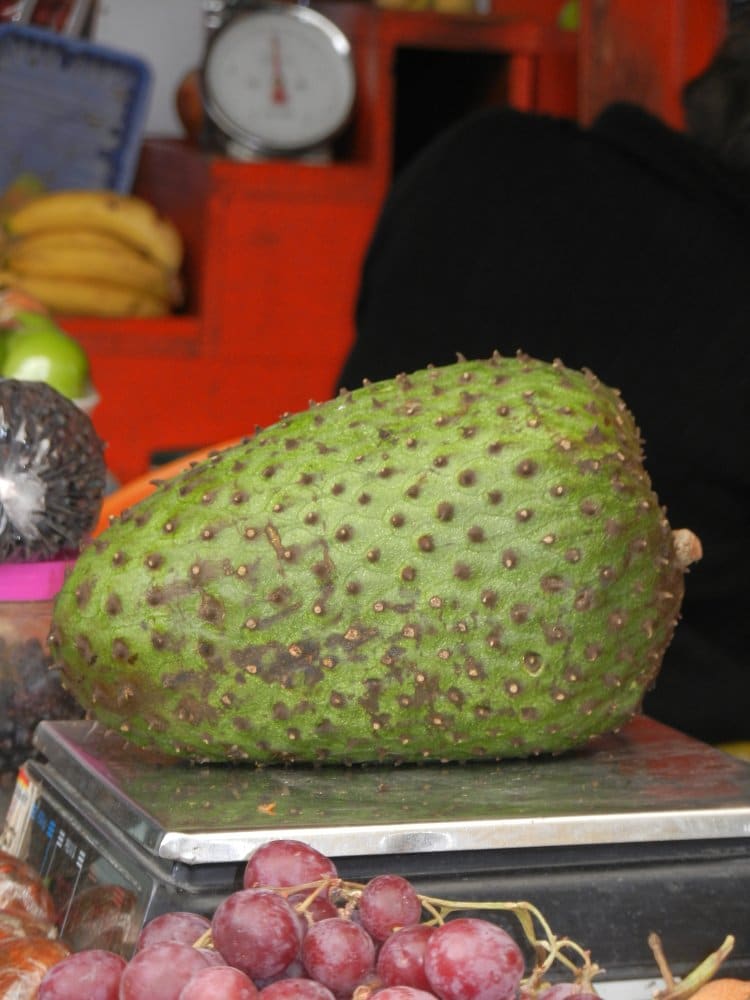
2. Granadilla: the perfect on-the-go fruit
Fruit makes for a wonderful, healthy snack. But to enjoy it, it needs to be peeled, chopped, or at least rinsed. Well, not granadillas!
Consisting of a hard shell guarding a sweet, clear interior of pulp-covered seeds, you can easily have them on the go. Just break them open with your hands and enjoy. You can slurp the pulp, or use your fingers to eat it.
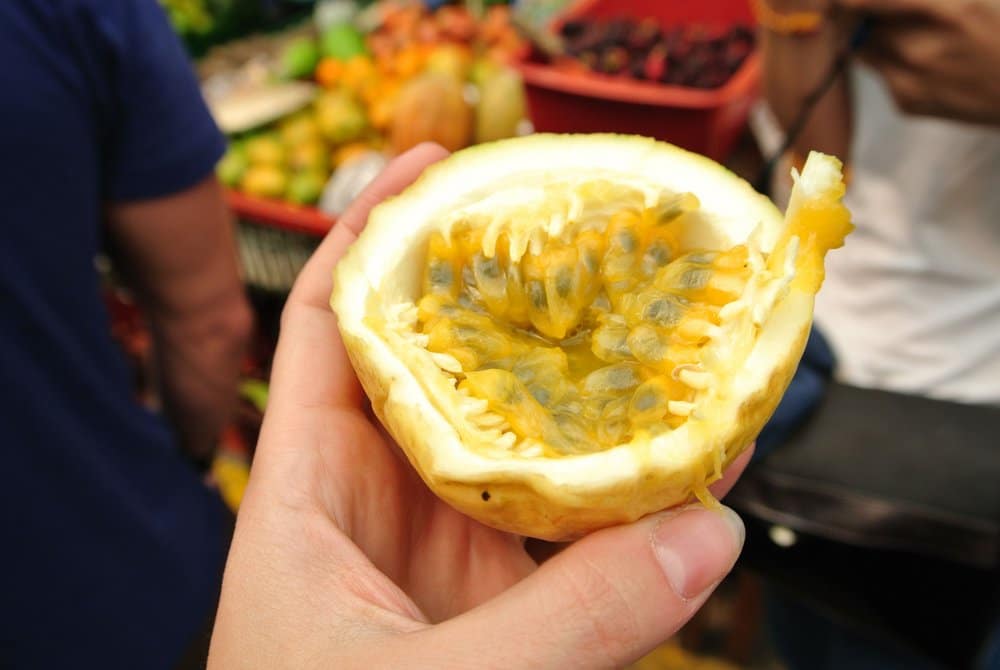
3. For your juice cravings: lulo, curuba, and maracuyá
Most Colombian fruit is consumed in the form of juices. Traditional Colombian food is usually paired with natural drinks at meals. Some of the most typical local juices are made from acidic fruits and the flavor is then balanced with water or milk, and sugar.
Lulo is one of them. When ripe, they are orange on the outside. Their insides resemble that of a tomato, but green. Lulos are also used for sauces, as well as desserts.
And, a lulo is such a typical Colombian fruit that we decided to name our travel agency after it!
Curuba is another sour fruit juice. It becomes ready to eat when it looks yellow. The pulp is similar to that of granadillas, seeds and all, except it is bright orange.
The triad is completed with maracuyá, Colombia’s favorite passionfruit. It is commonly used not only in juices, but in sauces, desserts, and ice cream.
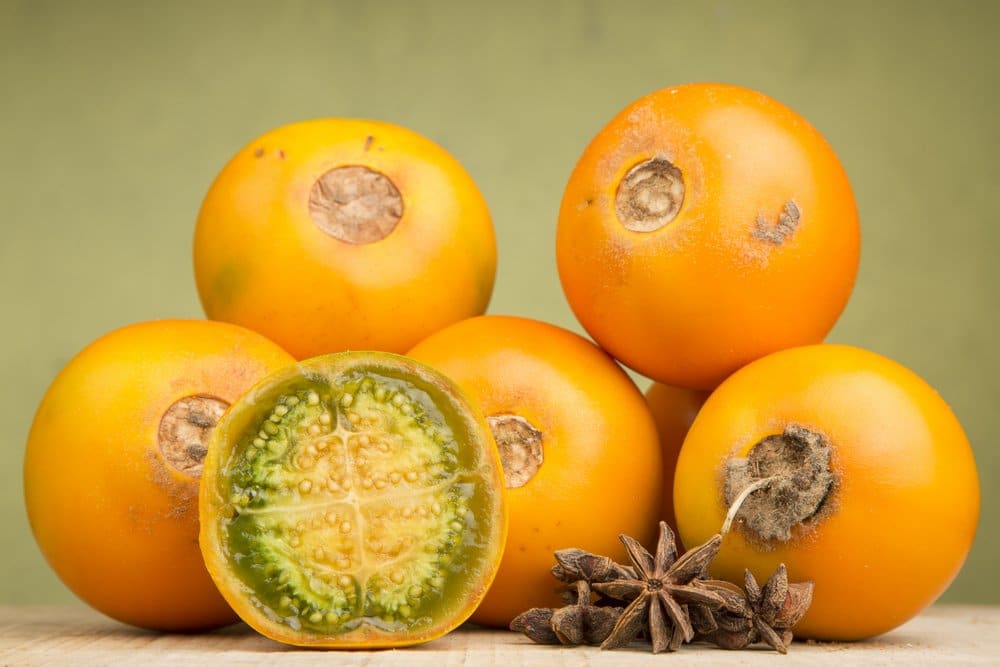
4. Zapote: mango’s Colombian cousin
Zapotes are round and brown. The fruit may look different to a mango, but the inside is not. Its pulp is sweet, stringy, and neon orange. Farmer’s markets sell them whole or blended in smoothies and juices.
5. Pitahaya: Colombia’s dragon fruit
While Southeast Asian dragon fruit has a pink exterior, Colombia’s pitahaya is bright yellow. Its flesh is subtly sweet, as well as refreshing.
It is described as tasting like a mix of grape, kiwi, and lychee. Keep in mind pitahayas are powerful laxatives, so enjoy them in moderation.
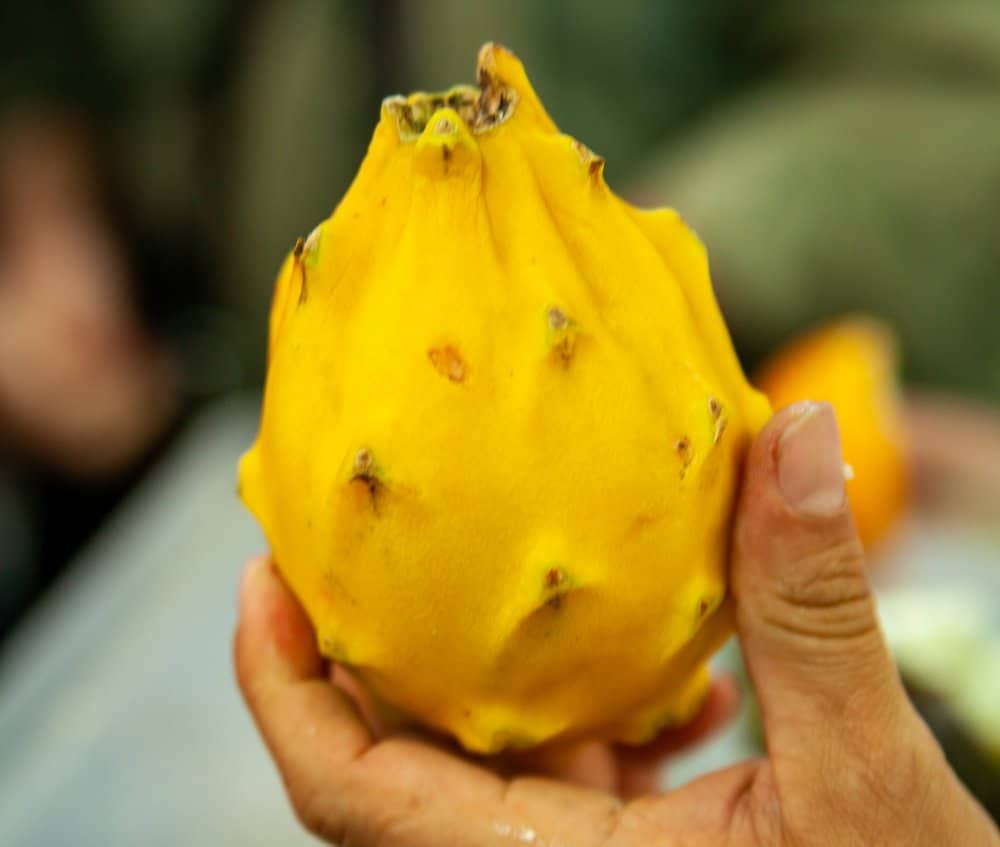
6. Aphrodisiacs from trees? Borojó and chontaduro
Yes, you read that right. Some Colombian fruit is believed to be a potent aphrodisiac. Borojó is one of the most well-known. This brown-looking fruit can be eaten raw, but due to its sourness is more commonly found in juices.
On the other hand, chontaduro is usually bathed in salt, vinegar, or honey when eaten. Its red-orange pulp can be described as dense, almost meaty, and very dry.
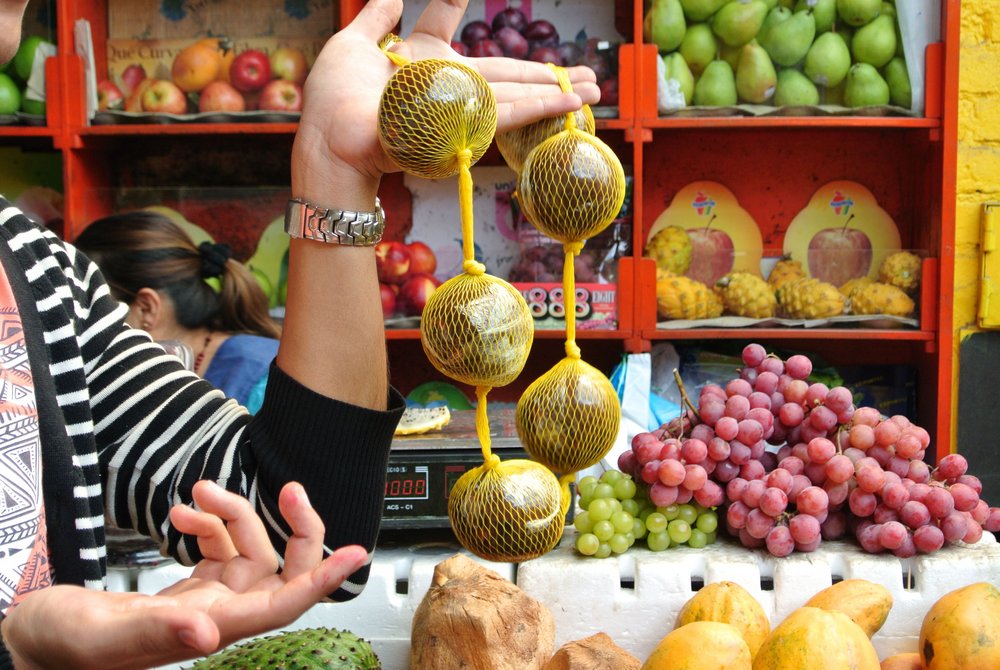
6. Uchuvas: golden, sour berries
You may know them as golden berries, or even gooseberries. These small, bittersweet, yellow-orange fruits are a popular dessert. Nevertheless, you can have them raw too!
Dive into the wonders of Colombian fruit
The amazing variety and quality of local fruits are one of many reasons to visit Colombia. During your vacation, make sure to stop by a market to bask in the wonders of Colombian soil.
If you need help or guidance with the planning process of your trip to Colombia, don´t hesitate to contact us. We have a team of travel experts looking forward to help you have the best holiday of your life.
